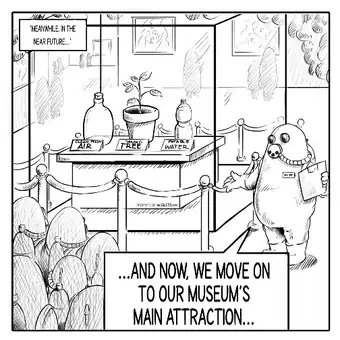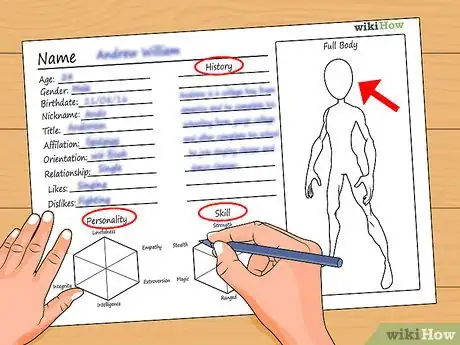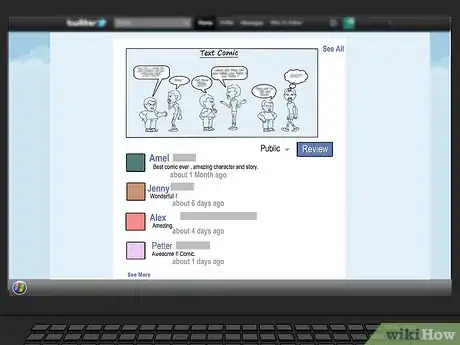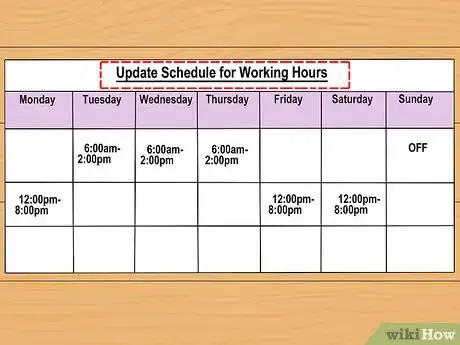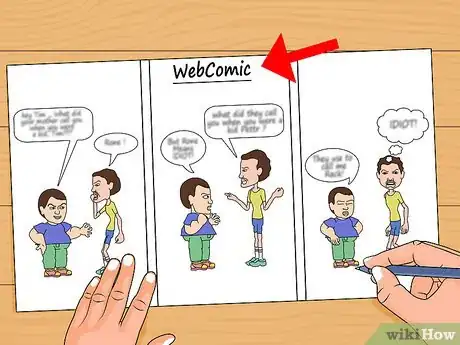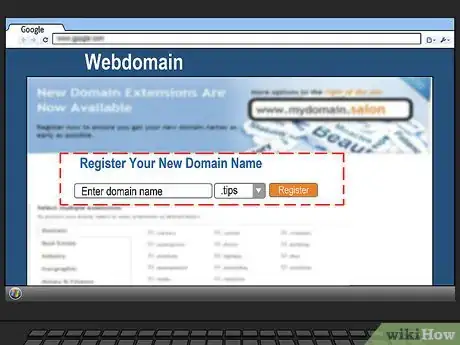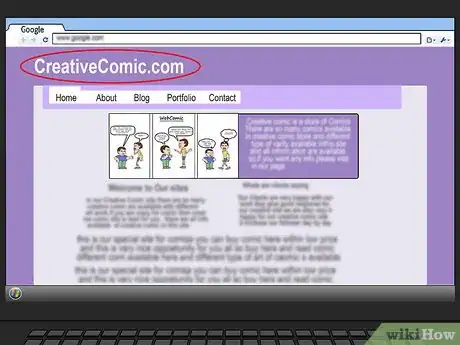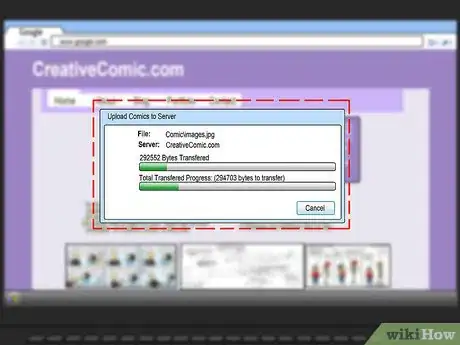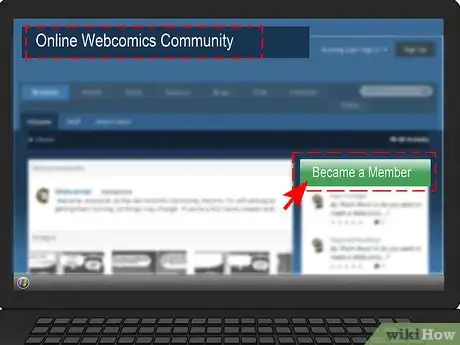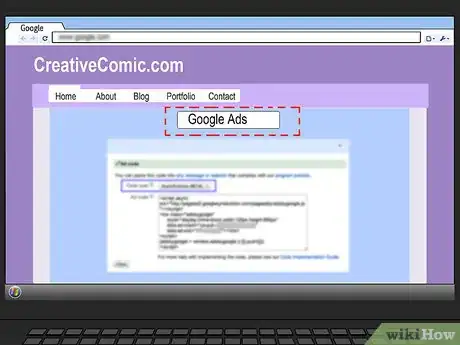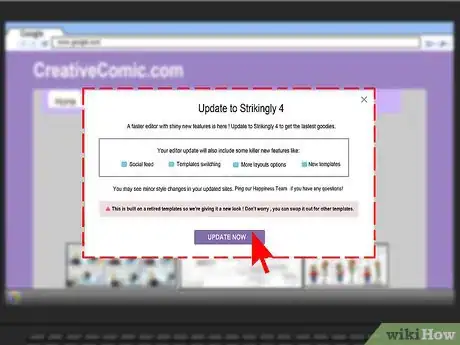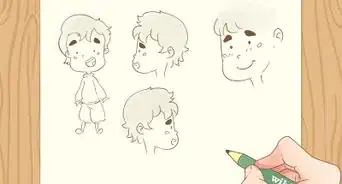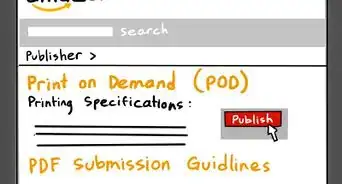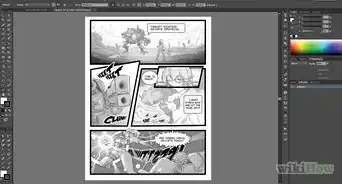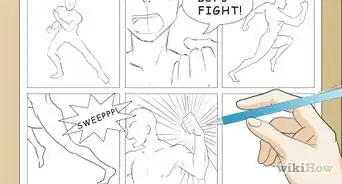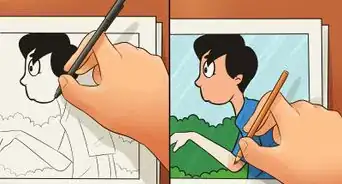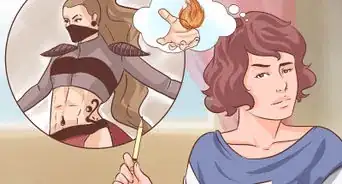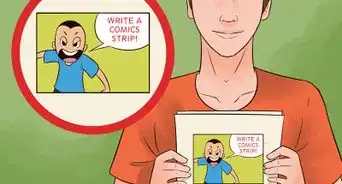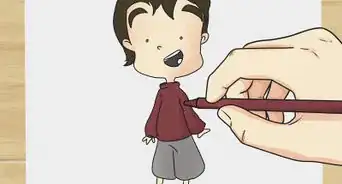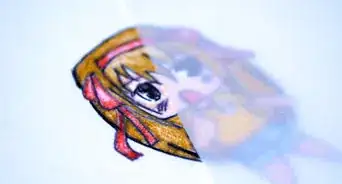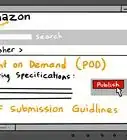wikiHow is a “wiki,” similar to Wikipedia, which means that many of our articles are co-written by multiple authors. To create this article, 45 people, some anonymous, worked to edit and improve it over time.
wikiHow marks an article as reader-approved once it receives enough positive feedback. This article has 15 testimonials from our readers, earning it our reader-approved status.
This article has been viewed 374,697 times.
Learn more...
Do you have a cool, creative side that you're wishing to get out? Show people your creative, talented side by making a webcomic! This simple guide will get you on your way to webcomic success. It's not as hard as it seems!
Sample Comics
Steps
Setting Up for Success
-
1Create a compelling concept. For many webcomics, this means having a good plot. Your webcomic doesn't have to have a plot, but having one will make it easier to come up with ideas and stay motivated.[1] Use tools like Monomyth and Act Structure to make sure that your story has good pacing and that your readers will be able to connect with the story. Choosing some themes and issues to cover can also help.
- Remember the most common writing advice: write what you know! It's good advice! This doesn't necessarily mean that you should only write about your life or make realistic fiction style stories. It just means that you'll usually write best when you write about overall experiences and emotions that you know about.
-
2Create your characters. Create some primary and secondary characters, if your comic will have regular characters. Draw a character sheet for them so that you're sure to stay consistent with their look. Then write yourself a "cheat sheet" of their character history, personality, flaws, and other details.
- Remember that characters that lean more heavily on the flawed side will give you more to work with as writer and develop over time. Balance is important, but you need to give yourself wiggle room!
Advertisement -
3Draw up a couple of test comics. Write three or more test comics. They should incorporate all your main characters (if you have them) and be in the style you want your webcomic to be. Don't make it very quick and sketchy or very careful and precise if this isn't how all the comics will be done.
- The goal here is for you to get an idea about how long it takes you to make a comic and learn how you might streamline the process. You might end up deciding that you need a simpler style, less coloring, or other changes.
-
4Get some feedback. Show them to your friends to review. If you don't think your friends will be a very reliable source, try to find a chat-room or some online friends to send them to. You'll want to understand what's good about your comics and what things you need to do to improve. Ask for a good amount of detailed feedback on them, not just an "I like it!" or "It's funny!".
- Don't worry about catering to what every single person says. You want to deal with what the most common complaints are.
- Do people dislike your main character? Are your jokes funny? Is your drawing style a bit slapdash? Work on things like this before you complete your final comics.
-
5Decide on an update schedule. You'll want to have a regular schedule that you can update on and then stick to that schedule. This is so your readers will know when to come looking for a new strip.
- Having am irregular publishing schedule is a good way too lose your readers and deter new ones. An update schedule will also help motivate you to work on your comic, as working on it as a habit will help you overcome laziness and procrastination.
Getting Your Comic Out There
-
1Work up a buffer. You want to start your webcomic with as many strips as possible. Your first update should include more than just one strip, so that your readers can get a sense of what you're about, and then you want to have extra comics available in case you can't work on one that week (or whatever your update schedule is). If you find it hard to write up this many comics, then this possibly isn't something you should pursue. You should probably have quite a few ideas in your head already - you won't have to write as many at a time in the future, so don't worry.[2]
- Generally you want to start with 1-3 months worth of strips.Do more if you know your schedule is hectic or you're prone to procrastination.
- If you wish, you can use the same plot lines you used in your first three, just cleaned up from the new feedback you've received.
-
2Get a web domain. You can get your comic hosted for free on websites like Comic Fury, Smack Jeeves, Drunk Duck, and others, but these websites severely limit your ability to make money from your comic. They also tend to look unprofessional. If you're okay with that, then that's fine! Otherwise, you'll want to get your own website domain.[3]
- You can get a website for very cheap and the right web host can make it much easier to run. Give your website a good name that's easy to remember. Naming it the same as your comic will help a lot.
-
3Get your website up and running. If you do not know much about web design, you may want to hire somebody or get a friend. The place you get the domain name from may offer this! Hosting sites like Web Fury can help if you have little experience with setting up websites, as you can use their templates and tools. Although they are under an update presently, so you may have to wait a little. You'll want a simple layout, with basic colors and few visual distractions. This will help make sure that your website doesn't distract from your comic. When you format your site, try to do the following:
- Center your webcomic in the middle of the page. It should not be too big or too small.
- Make your comics easy to navigate. Include a link to an archive of all of your comics. Arranging them by story line or chapter usually works better than by date, if your comic has an actual plot line. You should also include buttons below the comic that let you see the "first", "previous", "next" and "latest" comic strips.
- List the name of your webcomic at the top of your page, along with the update schedule.
- Let your readers "see" you. Include a Contact page, so people can e-mail you about the comic, advertising, collaborations, feedback etc. You should also have a blog area, possibly below your comic, that will just be random musings from you, possibly about the comic. This way you can keep people informed and help them connect with you.
- Give your readers a voice. Consider a comments area for viewers to comment on your comics. This is not for everyone, but it will make your readers much happier and invested in the story. You can add a forum later if your comment section can't handle the load.
- Consider a link exchange or links section. They may do the same in return for you, thus raising your site traffic. Just talk to other artists!
-
4Post your web comics. Get the comics up and on to your website. You can put them all up at once, or spread them out over a series of time. Many websites will let you make an update queue, so that the website updates at a set time, even if you're away. You should already be writing new comics as you are putting these ones up: always maintain your buffer!
Succeeding in Webcomics
-
1Advertise your site! People won't just come across your site. Talk to people who run other web comics and get them to write a small blogpost about you, or have a link to you on their site. Get an advert for your webcomic on similar sites. Go onto forums and make a thread about the site.
- Put links on your Instagram, Twitter, or Facebook and in your signature on any forums you are a part of. Ask any friends who would appreciate its humour to go on, and perhaps advertise it on their blogs/sites.
-
2Connect with the community. Getting in with the webcomics community and making friends with other creators can really help you be successful in webcomics. They can give you advice, encouragement, and help you promote your comic. The community is strong and supportive, so don't be afraid to reach out.
- Spend time interacting with and supporting other comic artists, and be sure to be respectful and positive. Definitely don't be creepy!
-
3Monetize your comic. Running a website can be expensive, especially if you have a lot of readers. It is also really time consuming. If you want to create more time to work on your comic, you'll need to find a way to get it supplementing your income so that you don't have to work as much.
- You'll make a little money by putting ads on your site (Google Ads are easiest) but most webcomic cartoonists make most of their money from merchandise (often called "merch").
- Be prepared to deal with getting books, posters, stickers, and other items printed and made, as well as traveling to conventions and things like that. If you're not up for these things, then you're unlikely to be able to sustain your comic in the long run.
-
4Keep updating! Don't let your web comic die. If you've been unpopular for a few months, don't stop updating! If the material is good, people will come. Making a really successful webcomic is like becoming a movie star. It takes a lot of hard work and most of the time recognition won't come right away. You have to persist!
Community Q&A
-
QuestionHow can I create comics in Webtoon?
 Community AnswerIn Line Webtoon, the user interface is such that you have to have completed strips/chapters in order to create comics. Once you're done with individual chapters, you can simply upload the files in the website and then wait for feedback.
Community AnswerIn Line Webtoon, the user interface is such that you have to have completed strips/chapters in order to create comics. Once you're done with individual chapters, you can simply upload the files in the website and then wait for feedback. -
QuestionHow can I get paid for my webcomic?
 Community AnswerYou can earn a profit through ad revenue. If you can, put ads on your comic pages. You could also use funding sites like Patreon.
Community AnswerYou can earn a profit through ad revenue. If you can, put ads on your comic pages. You could also use funding sites like Patreon. -
QuestionI am making my own comic, and I am a fairly good artist. Should I make it look realistic, or stick with a cartoon style?
 Community AnswerIt depends on the subject matter. If you're going for a serious or dramatic story, it's best to use realistic art. If going with a fantasy story, maybe a more cartoonish style. If you're doing humor, this lends itself to a cartoony style.
Community AnswerIt depends on the subject matter. If you're going for a serious or dramatic story, it's best to use realistic art. If going with a fantasy story, maybe a more cartoonish style. If you're doing humor, this lends itself to a cartoony style.
Warnings
- Switching from humor to drama can be a pitfall. Handle this gradually and be wary of abrupt changes.⧼thumbs_response⧽
- It can be dangerous to make a comic about relationships! Make sure it's not offensive and do your research. You wouldn't put a young boy with a priest, would you?⧼thumbs_response⧽
- Don't become obsessed with your comic!⧼thumbs_response⧽
- You will probably get some weird people sending you discouraging messages. These people have no life. Don't listen to them.
- On the flipside, do not block out all criticism. While some people may just want to bring you down, others want to see you improve your craft. Remember, no matter how good you are, you can always get better.
⧼thumbs_response⧽
Things You'll Need
- A computer
- A scanner (unless you're drawing it on the computer)
- Paper/Pencils/Coloured Pencils (unless you're drawing it on the computer)
- Money for domain name and advertising costs (this can be optional)
References
About This Article
To make a webcomic, write your own plot with specific themes and issues to cover so it’s easier to come up with ideas and so your readers will be able to follow the storyline better. Then, create characters for your story, and write cheat sheets that have the character’s history, personality, and flaws. Include some drawings of the character as well, so you can make sure it always looks the same. Finally, draw a test comic based on that information and ask your friends what they think of it. Keep reading for tips on publishing your comics and getting more people to read them!


